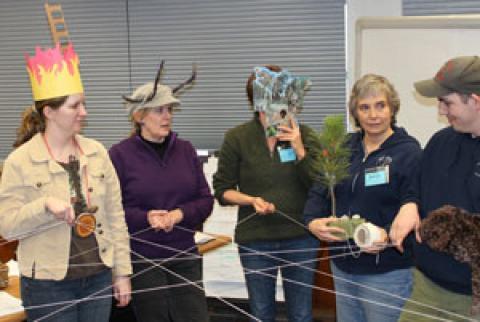
FireWorks is an educational program about the science of wildland fire, designed for students in grades 1-12.
FireWorks provides students with interactive, hands-on materials to study wildland fire. It is highly interdisciplinary and students learn about properties of matter, chemical and physical processes, ecosystem fluctuations and cycles, habitat and survival, and human interactions with ecosystems. Students using FireWorks ask questions, gather information, analyze and interpret it, and communicate their discoveries.
The FireWorks program consists of a curriculum and a trunk of materials, including laboratory equipment, specimens, and kits of specialized materials for educators. While many of the activities can be used in any ecosystem, many are applicable to specific regions. FireWorks has specialized curricula to learn about:
- Fire in the Northern Rocky Mountains and Northern Cascades
- Fire in the Sierra Nevada
- Fire in the Sagebrush Ecosystem
- Fire in the Missouri River Country (from the northern Rocky Mountain Front to the tallgrass prairies)
- How and why the Pikunii (Blackfeet) people carried fire
The curriculum has also been adapted to Colorado ecology (implemented by Colorado Project Learning Tree), and we are drafting a ‘generic’ version for educators to adapt to their specific ecosystems.
Educator workshops are offered each year to teach educators, community leaders, and agency communicators how to use FireWorks. Two research projects have shown that FireWorks increases student and adult understanding of wildland fire (see FireWorks: Hands-on Education).

